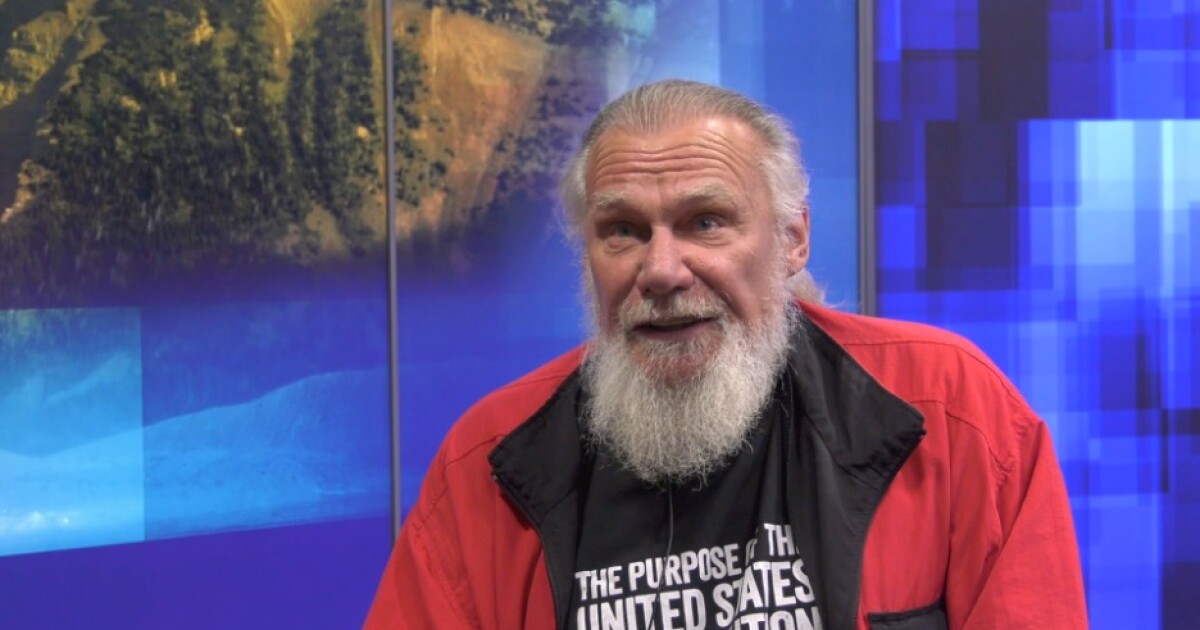Montana is likely facing a period of slower growth in 2024 after a hot few years of economic activity, according to Patrick Barkey, the director of the Bureau of Business and Economic Research at the University of Montana.
“The fear of recession has really receded,” he told a crowd in Bozeman on Wednesday. “What we face is slow growth. There’s no drama there. What we’ve been though since 2020 has been nothing but drama, down then up. But slow growth is coming.”
Barkey and a group of other experts are on their annual Economic Outlook Seminar, a tour around the state to give people a look into the crystal ball about what we can all expect in the years ahead and where things stand right now. The talks focus on the economy, tourism, health care, housing and other topics.
On a past tour in 2022, Barkey and his team predicted a recession would happen in Montana and in the U.S. in 2023. Like many other economists, they were wrong.
People are also reading…
“2023 was nothing at all like we forecasted,” Barkey explained.
Instead, the coveted “soft landing” appears to have happened, meaning growth was throttled just enough to tame inflation but not cause a recession.
Permits for new residential construction in Montana have dipped in recent years despite high prices.
But now it looks as if consumers have run out of spending power.
“We really think that the stronger growth in the second half of last year borrowed from this year,” Barkey said. “The capacity for consumer spending growth is just not there. We’ve spent down that extra cash. Consumer credit (debt) is up. It just looks like an economy that’s breaking.”
Barkey said he and many other economists are predicting that the Federal Reserve Board will cut interest rates in the coming year. He said rates are currently high, which is hampering everything from new construction to homebuying activity. Barkey noted that historically, interest rates have been much higher in past decades than they are now.
The economy has been a rollercoaster for the past few years, he explained.
“We have been through an incredible experience,” Barkey said. “Usually, the economy takes the elevator down and takes the stairs back up. That certainly was true for the Great Recession. But this time we took the elevator up.”
For example, Montana has recovered 149% of the jobs lost during the pandemic, he said, meaning there has been explosive job growth here. That’s true of other states in the Mountain West.
“The big growth story is the Mountain West and the South,” Barkey explained. “That’s likely to stay around for a while.”
Migration of people into Montana has slowed down the last couple years. In 2021, there were about 20,000 new residents in Montana from other places. That dropped to about 10,000 in 2023.
“Migration to Montana cooled last year, and it was inevitable that this would cool off,” Barkey noted.
The labor market remains tight, which means there are more job openings than workers. That means workers have more latitude to choose their jobs and the terms of their jobs.
Montana’s economy peaked a few years ago.
“In the Montana economy, it’s like you’re reading a book you can’t put down — it’s so dramatic,” Barkey said. “It’s really clear the peak here was 2021. It’s been slowing down since. It’s most evident from tax receipts. Not so much wages and salaries. Business owners are seeing the big change. They’re not in terrible shape, they’re just not seeing that same phenomenal growth.”
As far as predictions for the U.S. economy, Barkey said he and many others are carefully watching China.
“There’s been a profound growth slowdown in China,” he said. “But that’s helping to keep commodity prices in check. If you’re smiling because gas prices are low, that’s the reason.”
A special feature on this tour is a presentation on what it would take to implement the so-called “green energy transition” in Montana.
Barkey’s message was that Montana, and the rest of the U.S., will have some hard decisions to make in the future if we’re going to transition to carbon-free power. He noted that by 2035, the world would have to produce many times more copper than has ever been produced in the past in order to get away from burning fossil fuels.
“That’s difficult to do in the U.S. because it takes so long to permit mines,” he said. He showed one example of a copper mine in Montana, the Black Butte Copper Project, that’s taken 14 years to get permitted and still isn’t fully operational. Barkey said he has no opinion of whether it’s good or bad to have a mine permit take that long.
“I just say this process is incompatible with meeting green energy transition goals as they relate to copper demand,” he said. “So one or the other has to give.”
Derek Sheehan, an economist at the Bureau, gave an update on housing and construction.
He said there are low rental vacancy rates, leading to high rent prices. There’s a relatively low number of homes for sale, but also a low number of buyers who are waiting on lower interest rates. And the building industry is in sort of a holding pattern. He noted that builders, and employers in many industries, are having trouble hiring and keeping workers because of high housing prices.
“The residential market in Montana is undergoing significant changes, highlighting the urgency for a proactive and equitable approach to boost housing availability,” Sheehan said. “Consumers naturally turn to their next feasible option in markets where supply is scarce, and prices are rising. It is critical to recognize the demand for housing, ranging from homeless shelters to vacation homes, is interconnected.”
He noted that plenty of research shows that rising rent prices correlate to an increase in per capita homeless people in cities that have been studied.
Melissa Weddell, the director of the Institute for Tourism and Recreation Research at UM said that Montana’s approach to tourists has changed since the huge influx of people visiting during and after the pandemic.
“The old model was to bring as many people as possible, and that’s changed since the pandemic,” she said. “We’re starting to see this real shift in what we call ‘destination stewardship.’”
She explained that communities are trying to build a sustainable tourism model so that towns aren’t overrun by tourists and the natural resources are preserved, yet the industry remains an important part of the economy.
David Erickson is the business reporter for the Missoulian.
































